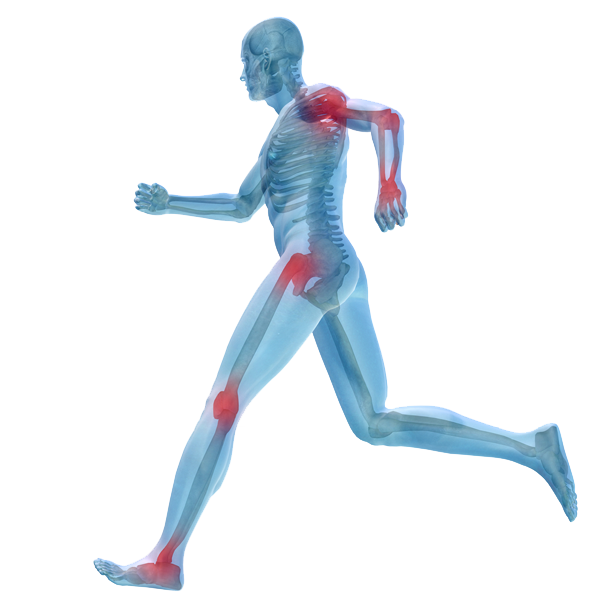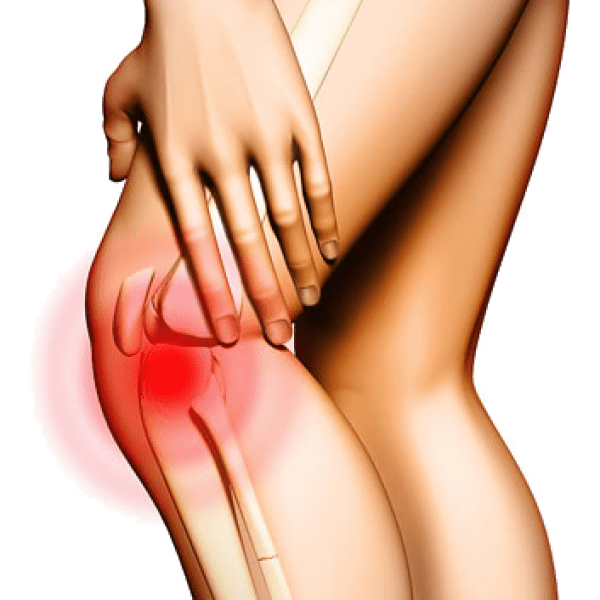
Orthopedic Wellness & Sports Injury & Rehab
Orthopedic mobility analysis focuses on assessing a patient’s movement capabilities, particularly in relation to musculoskeletal conditions. This analysis can help identify limitations, guide treatment plans, and evaluate recovery progress. Key components include:
Range of Motion (ROM) Assessment
- Active ROM: Evaluating how far a patient can move a joint voluntarily.
- Passive ROM: Measuring how far a joint can be moved with assistance.
Functional Movement Screening
Assessing basic movement patterns (squatting, lunging, reaching) to identify dysfunction and risk of injury.
Strength Testing
Evaluating the strength of specific muscle groups through resistance exercises or functional tests.
Gait Analysis
Observing walking patterns to identify abnormalities that may indicate underlying orthopedic issues.
Balance and Stability Assessment
Testing static and dynamic balance to evaluate core stability and joint function.
Posture Evaluation
Analyzing posture to identify any deviations that could contribute to pain or dysfunction.
Pain Assessment
Utilizing scales (e.g., visual analog scale) to quantify pain levels during movement.
Patient History and Subjective Feedback
Gathering information on previous injuries, surgeries, and symptoms to contextualize findings.
Diagnostic Imaging (if necessary)
Using X-rays, MRIs, or CT scans to further investigate structural issues.
Applications
- Rehabilitation: Guiding recovery post-surgery or injury.
- Prevention: Identifying at-risk individuals to implement preventive measures.
- Performance Optimization: Enhancing athletic performance through tailored mobility programs.

Knee Joint Preservation

Restoration of the normal motion of the knee joint and functioning without replacement is achieved by different methods of joint care and it is known as “knee joint preservation”. The approach of preserving the knee joint helps orthopedic surgeons to treat knee joint problems while retaining the natural structure of the affected joints. Techniques of knee joint preservation are used primarily in persons having defects in the articular cartilage of the knee.
Cartilage injury is a precursor to arthritic conditions and it may sometimes be manifested in the form of knee pain. The symptoms and severity of knee joint defects may vary from person to person. Traumatic injuries or age-related wear and tear often lead to damage of articular cartilage resulting in pain, stiffness and a limited range of motion. Since the articular cartilage cannot regenerate or heal by itself, intervention in the form of surgical repair is often indicated to initiate or stimulate new cartilage growth. Restoration of articular cartilage relieves a person of pain, improves normal function and can even delay or prevent the onset of arthritis in the knee joint in certain cases.
Knee Joint Preservation vs. Replacement, What are the Indications for Knee Preservation?
Even though joint preservation is usually a doctor’s first choice to restore the normal function of the knee joint, certain factors need to be considered while choosing between the options of knee joint preservation and knee replacement. Some of the factors that affect this decision are:
Age of the person: It is generally seen that preservation techniques tend to have more positive outcomes in younger persons, but these techniques may also be sometimes preferred in older persons who are not fit to undergo major surgery.
Weight of the person: The amount of stress placed on a joint is directly proportional to the weight of a person. A loss of even one kilogram of body weight can reduce the load on the knee joints by as much as three to five kilograms. Weight loss in case of obese individuals is one of the strategies of joint preservation.
Strength and conditioning of the body muscles: A person’s muscles not only play a vital role in the movements of the joints but also function as joint protectors by absorbing shock. Engaging in regular exercise helps in maintaining and restoring the strength of the muscles thereby reducing joint stress and pain.
Severity of the cartilage defect: The cartilage acts as a cushion between two bones of the knee joint. Thinning or erosion of smaller areas of this cartilage may be well managed with minimally invasive joint restoration procedures. However, if the cartilage loss is more, it brings the bones in direct contact with each other. The friction arising due to direct contact between the bones thereby causes their deterioration. Such cases are more suitable for joint replacement surgery.
Some of the undermentioned defects of the knee are the indications for joint preservation:
- Ligament and articular cartilage injuries due to traumatic or progressive degeneration (wear and tear).
- Meniscus tear occurs in the rubbery knee cartilage that cushions the shinbone from the thighbone.
- Osteoarthritis – inflammation in the bones and joints
- Osteochondritis dissecans – cracks in the articular cartilage and the underlying bone.
- Patellar instability occurs when the kneecap moves outside of the groove at the end of the femur bone.
- Valgus or Varus malalignment, a knee deformity.
What are the Techniques of Knee Joint Preservation?
A comprehensive and customized treatment plan that takes into account a person’s age, activity level, expectations and degree of joint dysfunction is thus an important consideration in joint preservation. Multi-modality treatment options may often be a part of the comprehensive plan and include modification of physical activities, physical therapy, medications, injections and conservative surgery.
What are the Nonsurgical Approaches for Knee Joint Preservation?
Physiotherapy: A lack of physical activity often leads to joint damage, physical therapy and exercise are thereby the first line of defense against such damage. It may be difficult to move during an acute episode of pain and a wrong choice of exercise can do more harm. A customized exercise regimen under the supervision of a qualified physiotherapist and orthopedic surgeon can, therefore, help in restoring the function and easing the pain.
Exercises: A tailor-made exercise schedule is beneficial in not only improving the overall health of the person but it also helps in strengthening and increasing the mobility of the muscles, ligaments and tissues around the area of the damage.
Pain Modalities like IFT, Ultrasound: Localized application of pain-relieving modalities like ice, massage, deep heat, and sometimes nerve stimulation or ultrasound is found to be helpful in certain cases.
Lifestyle modifications: Sedentary and high-stress lifestyle can be harmful to the overall health and bone health of a person. Giving up harmful lifestyle habits can help in knee joint preservation. Some of the approaches are:
Weight reduction: As stated earlier, knee joints wear the brunt of excess body weight, making them work harder. Weight management strategies under the supervision of a qualified physician can make a significant difference by taking the harmful forces away from the knee joints.
Yoga, meditation, diet modifications: Relaxation by lifestyle management techniques like yoga, meditation and diet management strategies under the supervision of a qualified dietitian can help in alleviating the pain of knee joints.
Simple Painkillers, NSAIDS: Non-steroidal anti-inflammatory drugs available over the counter help in reducing acute pain and swelling in the knee joint. Considering that long term use of such drugs can be harmful, these should be taken only under the supervision of the physician or orthopedic surgeon.
Cartilage protecting drugs: Naturally produced chemicals in the body like glucosamine and chondroitin are also available in packaged supplements over the counter. These are sometimes prescribed by doctors. While glucosamine has a role to play in the repair of joint cartilage, chondroitin acts to prevent certain other enzymes from breaking down the joint cartilage.
Off-loading braces: External aids like a knee brace or sleeve can benefit in some cases by providing relief from pressure and an increased sense of stability. Further, aids like a walker, cane, or crutches offload a person’s weight from the arthritic knee. Consequently, they can lessen the pain during walking or weight-bearing and also reduce the risk of falling.
Injections into the Joint:
- Steroids:In case of a failure of NSAIDS to produce desired results, corticosteroids in the form of injections within the joint space may be prescribed to reduce inflammation.
- Viscosupplementation with hyaluronic acid:Synovial fluid containing hyaluronic acid is a lubricant produced by the body within the joint space. Joint pain may sometimes be a symptom of a lack of hyaluronic acid. Supplementation of this acid externally in the form of injections may help ease pain and stiffness in certain cases, even though it does not stall the progression of arthritis.
- PRP / Adipose tissue / BMAC:A concentrated form of platelets from a person’s blood is called platelet-rich plasma (PRP). Platelets not only have blood coagulation properties but they also contain proteins called growth factors that are used by the body in the process of healing injuries. PRP is sometimes used as a joint preservation approach in cases that fail to respond to more conservative options such as physical therapy, bracing and activity modification.
Treatments
Arthroscopy is a minimally invasive procedure used to diagnose and treat joint conditions. It is often preferred for repairing common sports injuries such as ACL tears, meniscus tears, rotator cuff injuries, and shoulder impingement, offering faster recovery and less post-operative pain.
Full and Partial: Knee replacement surgery involves replacing damaged knee joints with prosthetics. Full replacement is recommended for severe joint damage, while partial replacement is suited for patients with damage limited to a specific area of the knee, resulting in quicker recovery.
These procedures are designed to correct bone deformities caused by congenital conditions, trauma, or degenerative diseases, improving function and reducing pain in the affected area.
PRP therapy uses a patient’s own blood platelets to accelerate healing in injured tendons, ligaments, muscles, and joints. It is commonly used in sports injuries like tendonitis or ligament sprains.
Regenerative treatments, including stem cell therapy, focus on promoting the body’s natural healing process to repair damaged tissues, particularly in joints, ligaments, and tendons. This approach is gaining popularity for treating osteoarthritis and cartilage injuries.
